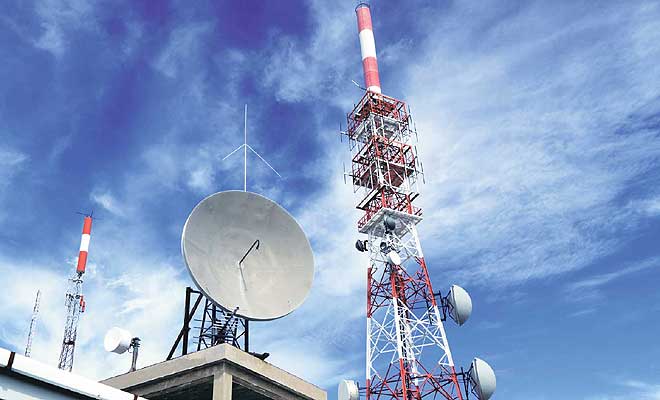 India is the world’s second-largest telecommunications market with a subscriber base of 1.16 billion and has registered robust growth in the last decade. The liberal and reformist policies of the Government of India (“GOI”) have been instrumental along with strong consumer demand in the rapid growth of the Indian telecom sector1.
India is the world’s second-largest telecommunications market with a subscriber base of 1.16 billion and has registered robust growth in the last decade. The liberal and reformist policies of the Government of India (“GOI”) have been instrumental along with strong consumer demand in the rapid growth of the Indian telecom sector1.
This article examines the new Telecommunications Bill, 2022 (the “Bill”) from the limited perspective of whether the regulations contemplated by the Bill would achieve the objectives of economic and social development and growth of the Indian telecom industry.
As set out in the preamble of the Bill, :
“Considering telecommunication is a key driver of economic and social development, and telecommunication infrastructure and telecommunication network are important parts of public infrastructure, and it is necessary to ensure availability of affordable, reliable, secure and universal telecommunication services”2
Presently, the regulatory framework for the telecommunication sector is based on the Indian Telegraph laws which dates back to 1885. Under the Indian Telegraph Act, 1885 s, “Telegraph” is defined as any appliance, instrument, material or apparatus used or capable of use for transmission or reception of signs, signals, writing, images and sounds or intelligence of any nature by wire, visual or other electro-magnetic emissions, radio waves or hertzian waves, galvanic, electric or magnetic means3. The Central Government (“CG”) has the exclusive privilege of establishing, maintaining and working telegraphs.4
It is imperative to note that the nature of telecommunication, its usage and technologies have undergone robust change since the era of “telegraph” and there has been various modern technologies for communication. Telegraph laws in India date back to the era before the internet’s rose, spread and grew. Therefore, there is need for a new law to liberate internet-based communication from the law meant for an outdated telegraph era.
In this context, on 21st September 2022, the GOI, Ministry of Communications, Department of Telecommunications, introduced the Bill. The Bill seeks to replace the existing laws governing telecommunications in India i.e. (i) Indian Telegraph Act 1885, (ii) Indian Wireless Telegraphy Act 1933, and (iii) The Telegraph Wires, (Unlawful Protection) Act 1950 (collectively, “Telegraph Laws”).
The Bill seeks to consolidate and amend the laws governing provision, development, expansion and operation of telecommunication services, telecommunication networks and telecommunication infrastructure and assignment of spectrum.
- THE DEFINITIONS OF “TELECOMMUNICATION SERVICES AND “TELECOMMUNICATION”
Under Section 3(1) of the Bill the CG has the exclusive privilege within India to:
- provide telecommunication services;
- establish, operate, maintain and expand telecommunication network and telecommunication infrastructure; and
- use, allocate and assign spectrum.
In this regard it is important to note that Section 2(21) of the Bill defines the term “telecommunication services” as follows:
“service of any description (including broadcasting services, electronic mail, voice mail, voice, video and data communication services, audiotex services, videotex services, fixed and mobile services, internet and broadband services, satellite based communication services, internet based communicationservices, in-flight and maritime connectivity services, interpersonal communications services, machine to machine communication services, over-the-top (OTT) communication services) which is made available to users by telecommunication, and includes any other service that the Central Government may notify to be telecommunication services.”
Section 2(17) of the Bill further defines “telecommunication” as follows:
“a transmission, emission or reception of any messages, by wire, radio, optical or other electro-magnetic systems, whether or not such messages have been subjected to rearrangement, computation or other processes by any means in the course of their transmission, emission or reception.”
- COMMENTS
On a combined reading of Section 3(1)(a) and Section 2(21) it would be possible to conclude that CG shall have the exclusive privilege to provide telecommunication services in India.
Consequently, should any entity (including any private corporation) seek to provide any of the services falling within the ambit of “telecommunication services,” such entity would have to procure a license from the CG for the provision of the said services.
Telecom licenses from the CG will be required not only for carrying on businesses such as mobile telephony or internet services, but also for providing OTT communication services (like WhatsApp). Further as the definition of “telecommunication services” is extremely broad includes even “electronic mail,” it would appear that the Bill intends that the provision of “e-mail services” like Gmail or video calling services like MS Teams would also require a license from the CG. This appears to be a step backwards.
The intent of the Bill is to capture futuristic technologies in its ambit apart from the traditional telecommunications services like mobile telephony. However, the drafting in the Bill is very ambiguous and extremely broad. Such a law may have negative implications on the growth of the telecom industry. Businesses such as OTT communication services and e-mail services (which are currently not regulated) would have to procure licenses from the CG. This would have a severe impact on their business structures and profitability. The increase in regulatory costs may also result in private corporations transferring such regulatory costs to the end customers meaning the costs of such services would increase. This in turn would limit the access of such telecom services to economically weaker sections of society.
The intent of the GOI in governing futuristic telecommunications services is deeply appreciated, and the market does need a modern law that reflects the significant changes in technology. However, it is our view, that the Bill needs a complete overhaul and re-examination before it can become law and achieves its objectives.
Footnotes
1. https://www.ibef.org/industry/telecommunications
2. The draft Telecommunication Bill, 2022
3. Section 3(1) of the Telegraph Act,1885
4. Section 4 The Telegraph Act,1885
The content of this article is intended to provide a general guide to the subject matter. Specialist advice should be sought about your specific circumstances.



